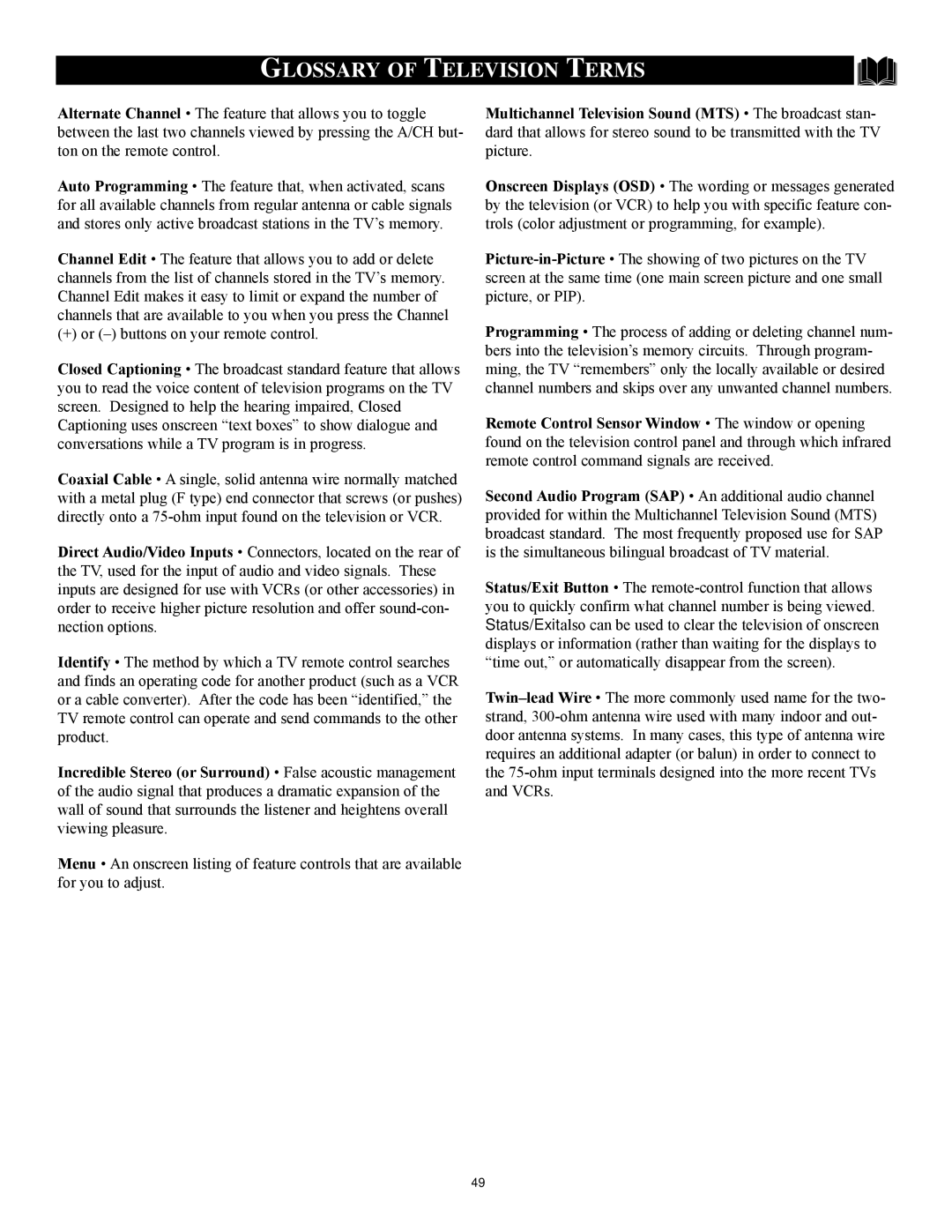GLOSSARY OF TELEVISION TERMS
Alternate Channel ¥ The feature that allows you to toggle between the last two channels viewed by pressing the A/CH but- ton on the remote control.
Auto Programming ¥ The feature that, when activated, scans for all available channels from regular antenna or cable signals and stores only active broadcast stations in the TVÕs memory.
Channel Edit ¥ The feature that allows you to add or delete channels from the list of channels stored in the TVÕs memory. Channel Edit makes it easy to limit or expand the number of channels that are available to you when you press the Channel
(+) or (Ð) buttons on your remote control.
Closed Captioning ¥ The broadcast standard feature that allows you to read the voice content of television programs on the TV screen. Designed to help the hearing impaired, Closed Captioning uses onscreen Òtext boxesÓ to show dialogue and conversations while a TV program is in progress.
Coaxial Cable ¥ A single, solid antenna wire normally matched with a metal plug (F type) end connector that screws (or pushes) directly onto a
Direct Audio/Video Inputs ¥ Connectors, located on the rear of the TV, used for the input of audio and video signals. These inputs are designed for use with VCRs (or other accessories) in order to receive higher picture resolution and offer
Identify ¥ The method by which a TV remote control searches and finds an operating code for another product (such as a VCR or a cable converter). After the code has been Òidentified,Ó the TV remote control can operate and send commands to the other product.
Incredible Stereo (or Surround) ¥ False acoustic management of the audio signal that produces a dramatic expansion of the wall of sound that surrounds the listener and heightens overall viewing pleasure.
Menu ¥ An onscreen listing of feature controls that are available for you to adjust.
Multichannel Television Sound (MTS) ¥ The broadcast stan- dard that allows for stereo sound to be transmitted with the TV picture.
Onscreen Displays (OSD) ¥ The wording or messages generated by the television (or VCR) to help you with specific feature con- trols (color adjustment or programming, for example).
Programming ¥ The process of adding or deleting channel num- bers into the televisionÕs memory circuits. Through program- ming, the TV ÒremembersÓ only the locally available or desired channel numbers and skips over any unwanted channel numbers.
Remote Control Sensor Window ¥ The window or opening found on the television control panel and through which infrared remote control command signals are received.
Second Audio Program (SAP) ¥ An additional audio channel provided for within the Multichannel Television Sound (MTS) broadcast standard. The most frequently proposed use for SAP is the simultaneous bilingual broadcast of TV material.
Status/Exit Button ¥ The
TwinÐlead Wire ¥ The more commonly used name for the two- strand,
49
